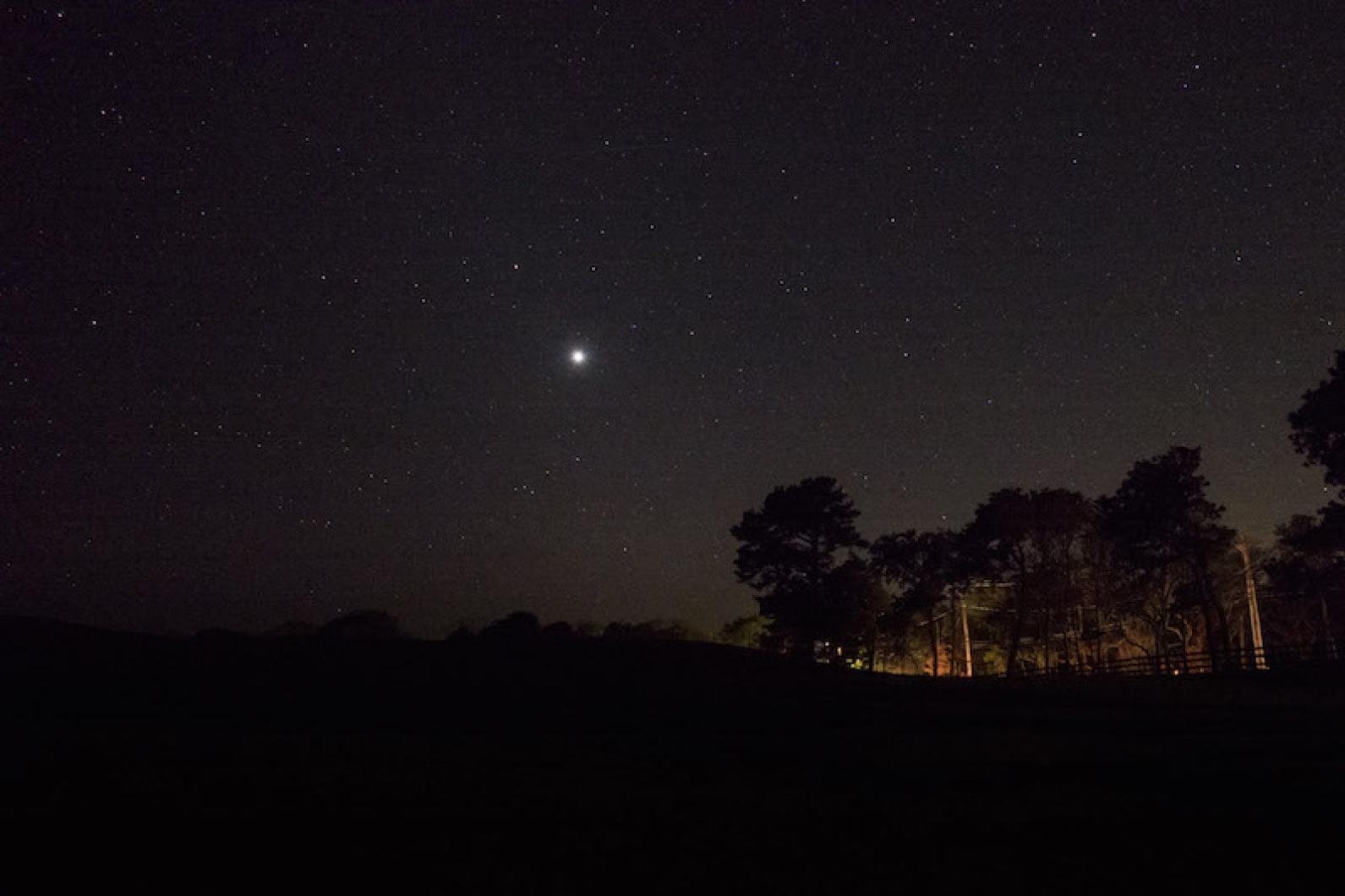Friday night’s first quarter moon appears high in the west, and is entering the zodiacal constellation Taurus, the mythological bull. Draw a line across the sky to the west, where the sun has set, and you will see the red planet Mars, followed by the brightest planet in the sky Venus, just above the horizon.
This weekend the moon is well within Taurus, not far from bull’s head, known as the Hyades. The head of Taurus is a large star cluster, one of the largest star clusters visible to the naked eye.
The Hyades has a resident orange star called Aldebaran. Aldebaran is one of the largest of visible stars in the sky. And though the star is many, many light years away, astronomers know that this one is considerably larger than our own sun. If our Earth were to be circling Arcturus, in the same way and distance that we circle the sun, the Earth would be uninhabitable.
The large size of Arcturus reminds us that our Earth has a special relationship with the sun that allows Earth to be a safe haven for life. Even so, the planet Venus is too close to the sun and the temperature in the atmosphere is hot enough to melt lead.
| Day | Sunrise | Sunset |
|---|---|---|
| Fri., Feb. 3 | 6:52 | 4:59 |
| Sat., Feb. 4 | 6:51 | 5:00 |
| Sun., Feb. 5 | 6:49 | 5:01 |
| Mon., Feb. 6 | 6:48 | 5:03 |
| Tues., Feb. 7 | 6:47 | 5:04 |
| Wed., Feb. 8 | 6:46 | 5:05 |
| Thurs., Feb. 9 | 6:45 | 5:07 |
| Fri., Feb. 10 | 6:44 | 5:08 |
| Day | Max (Fº) | Min (Fº) | Inches |
|---|---|---|---|
| Jan. 27 | 49 | 39 | 0.00 |
| Jan. 28 | 47 | 35 | 0.00 |
| Jan. 29 | 43 | 29 | T |
| Jan. 30 | 45 | 25 | 0.00 |
| Jan. 31 | 37 | 20 | T |
| Feb. 1 | 41 | 25 | *0.10 |
| Feb. 2 | 45 | 29 | 0.00 |




Comments
Comment policy »